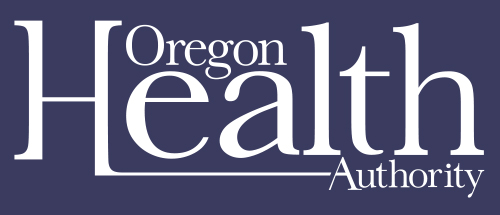Oregon crisis counselors provided behavioral health support to more than 53,000 contacts in first year since transition to 988.
Nearly one year since the nationwide launch of the 988 Suicide & Crisis Lifeline, an analysis by Oregon Health Authority (OHA) shows Oregon’s crisis call centers answered more than 53,000 calls, texts and chats between July 16, 2022, and June 30, 2023.
And today, the federal government announced the addition of Spanish text and chat services. People who speak Spanish can now connect directly to Spanish-speaking crisis counselors by calling 988 and pressing option 2, texting “AYUDA” to 988 or chatting online at 988lineadevida.org or 988Lifeline.org.
Text and chat options to 988 first became available in English a year ago; Oregon’s call centers answered over 10,000 texts and chats during the first year of this service. Overall, Oregon 988 call volume this past year reflects a 33% increase in calls to the previous, 10-digit National Suicide Prevention Lifeline in the same period a year prior. Oregon’s 988 crisis centers now receive an average of more than 4,000 calls and 850 texts and chats each month. This is an increase of approximately 500 calls per month.
Calling or texting 988, an easy-to-remember number, connects people with immediate behavioral health support. Those calling from Oregon area codes connect with trained crisis counselors at Oregon’s two 988 call centers: Lines for Life, which serves people statewide, and Northwest Human Services, which serves area codes from Marion and Polk Counties. Lines for Life currently answers all English texts and chats for the state of Oregon.
988 is available 24 hours a day, 7 days a week, providing compassionate care and support for people experiencing any type of mental health challenge, substance use crisis or thoughts of suicide or self-harm. Oregonians can also contact 988 for advice to support their loved ones, as well as get connections for local behavioral health care and referrals.
“We want everyone in Oregon to know that there’s always someone to talk to when you or your loved ones need help or are in crisis,” said OHA Behavioral Health Director Ebony Clarke. “If you or someone you know is struggling, please don’t hesitate to reach out to 988. It is free to call, text or chat with 988. Counselors will value your privacy, offer support and help you access further behavioral health care if you need or want it.”
Oregon’s call centers are meeting the needs of Oregonians in crisis, answering 988 calls within an average of 15 seconds. This wait time is after callers hear a national, pre-recorded menu of options to connect with the Veterans Crisis Line (press 1), receive support in Spanish (press 2) or get specialized support for LGBTQIA2S+ youth and young adults (press 3). People with Oregon area codes who press “0” or stay on the line will connect with Lines for Life or Northwest Human Services. Cell phones with non-Oregon area codes will connect with one of the other 200 nationwide Lifeline centers, a process the federal government is currently monitoring to improve access to local care and support.
Thanks to ongoing investments by the Substance Abuse and Mental Health Administration (SAMHSA) and the Oregon Legislature, most recently under House Bill 2757 (2023), Oregon will ensure ongoing, sustainable funding and improvements for 988 crisis call centers and continue building the broader crisis care system.
“To have a resource such as 988 to help people right now is tremendous, as is Oregon’s historic choice to embrace a broader vision for the future of our 988 crisis system,” said Chris Bouneff, executive director of National Alliance on Mental Illness (NAMI) Oregon. “With 988, we finally have a focal point from which to develop the system and resources that will act like the behavioral health care system that people need.”
Often, calling, texting or chatting with counselors at 988 is all people need to get through their crisis. By connecting people with trained counselors that can empathetically listen to concerns and provide compassionate care and support, Oregon’s 988 call centers are able to resolve or de-escalate nearly 97% of calls over the phone.
When an in-person response is needed, 988 call centers partner with Oregon’s Community Mental Health Programs, which can provide mobile crisis intervention teams with qualified behavioral health professionals. 988 counselors are also required to follow the 988 Suicide & Crisis Lifeline Suicide Safety Policy, which outlines processes to request support from emergency medical services when there is a clear risk of harm to the caller or others. In most calls that need emergency services, the person in crisis has asked for this support.
As 988 approaches its anniversary, OHA and its partners remain committed to continuous improvement of the crisis response system. This work is guided by people with lived experience and disproportionately affected communities, including through the Crisis System Advisory Workgroup and other community partners envisioning the crisis system Oregonians need.
“We hope that 988 and the crisis system will eventually, and more easily, connect people in need with equity- and trauma-informed, community-based care,” said Clarke. “Thanks to new and ongoing investments from the Oregon Legislature, we will, in the years to come, ensure there is always a behavioral health response available for anyone having a behavioral health crisis, so we can eliminate the pipeline to emergency departments and jails.”
Learn more about 988 in Oregon on OHA’s 988 web page. Watch a video on what to expect when you call 988. Find more information on 988, nationally, including social media and promotional materials in English and Spanish, through SAMHSA’s 988 Partner Toolkit.
If you or someone you know is struggling or in crisis, help is available. Call or text 988 or chat 988lifeline.org.
####









